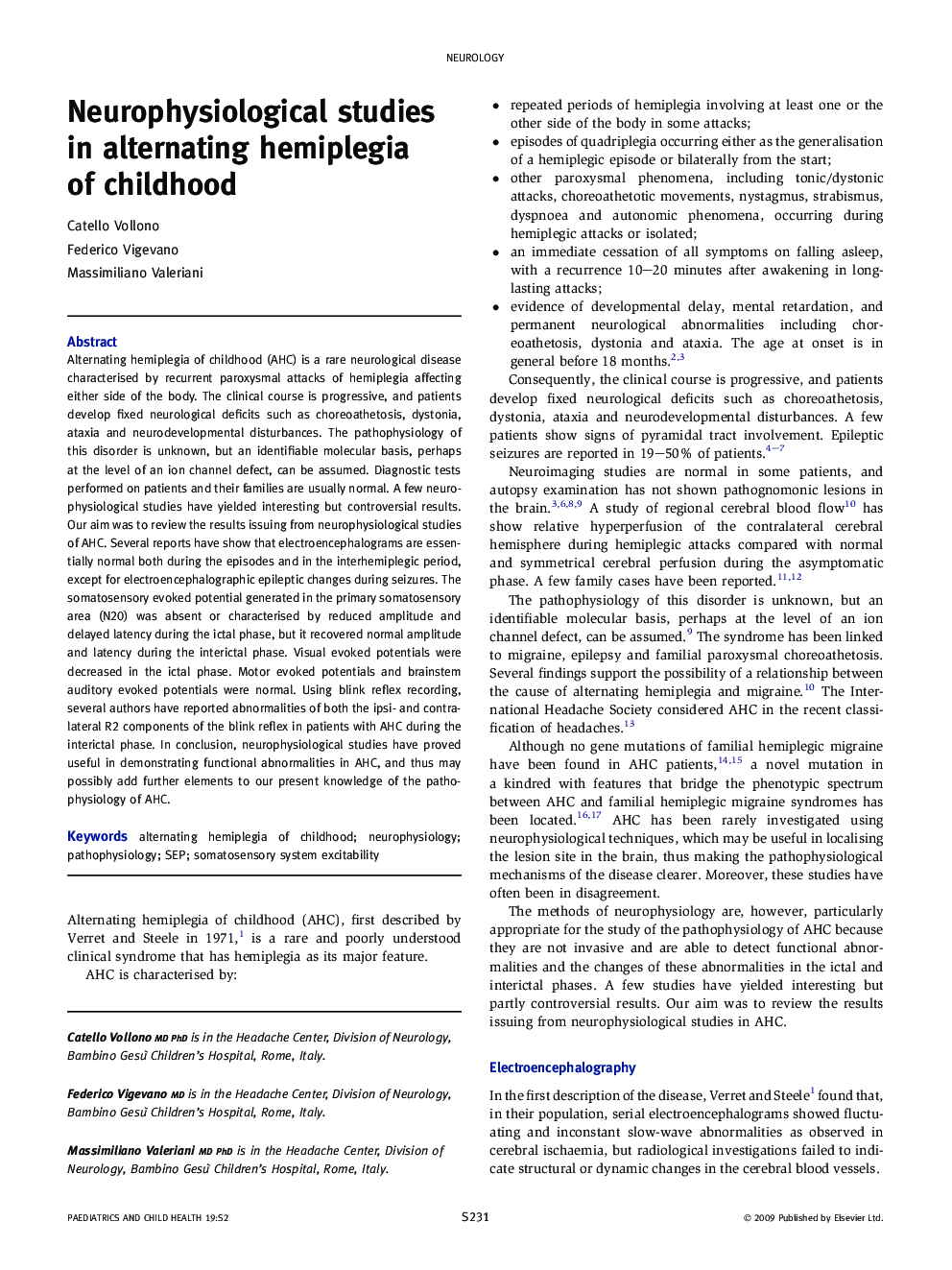| Article ID | Journal | Published Year | Pages | File Type |
|---|---|---|---|---|
| 4172914 | Paediatrics and Child Health | 2009 | 4 Pages |
Abstract
Alternating hemiplegia of childhood (AHC) is a rare neurological disease characterised by recurrent paroxysmal attacks of hemiplegia affecting either side of the body. The clinical course is progressive, and patients develop fixed neurological deficits such as choreoathetosis, dystonia, ataxia and neurodevelopmental disturbances. The pathophysiology of this disorder is unknown, but an identifiable molecular basis, perhaps at the level of an ion channel defect, can be assumed. Diagnostic tests performed on patients and their families are usually normal. A few neurophysiological studies have yielded interesting but controversial results. Our aim was to review the results issuing from neurophysiological studies of AHC. Several reports have show that electroencephalograms are essentially normal both during the episodes and in the interhemiplegic period, except for electroencephalographic epileptic changes during seizures. The somatosensory evoked potential generated in the primary somatosensory area (N20) was absent or characterised by reduced amplitude and delayed latency during the ictal phase, but it recovered normal amplitude and latency during the interictal phase. Visual evoked potentials were decreased in the ictal phase. Motor evoked potentials and brainstem auditory evoked potentials were normal. Using blink reflex recording, several authors have reported abnormalities of both the ipsi- and contralateral R2 components of the blink reflex in patients with AHC during the interictal phase. In conclusion, neurophysiological studies have proved useful in demonstrating functional abnormalities in AHC, and thus may possibly add further elements to our present knowledge of the pathophysiology of AHC.
Related Topics
Health Sciences
Medicine and Dentistry
Perinatology, Pediatrics and Child Health
Authors
Catello Vollono, Federico Vigevano, Massimiliano Valeriani,
